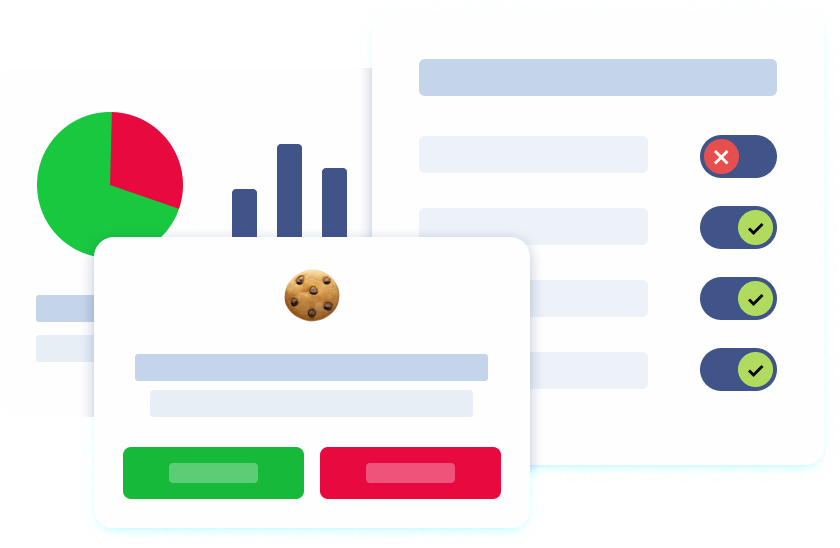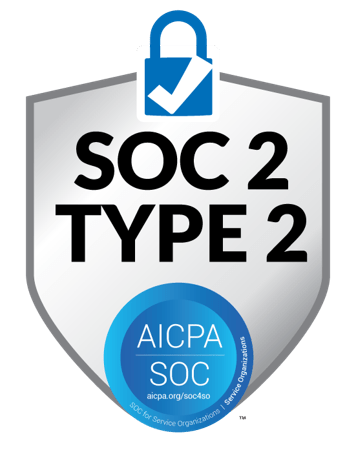Introduction
In today’s digital landscape, businesses must navigate a complex web of regional cookie policies to ensure compliance and maintain user trust. As data privacy regulations continue to evolve, e-commerce companies face the challenge of understanding and managing cookie consent in compliance with specific requirements across different jurisdictions.
Cookie consent is now a cornerstone of privacy compliance, with laws such as the General Data Protection Regulation (GDPR) in the European Union and the California Consumer Privacy Act (CCPA) in the United States setting strict standards for obtaining user permission before collecting personal data through cookies. Obtaining explicit consent under GDPR and CCPA is crucial for websites, especially those targeting users in the EU, to ensure users have clear control and transparency over their data handling. For businesses operating globally, understanding whether pre-consent cookie practices are permissible is critical, yet far from straightforward.
Cookie Consent
Cookie consent is a crucial aspect of data privacy, mandated by laws such as the General Data Protection Regulation (GDPR) and the California Consumer Privacy Act (CCPA). It involves obtaining explicit user consent from website visitors before storing or accessing cookies on their devices. Cookie consent is essential for maintaining user trust and ensuring compliance with data privacy laws. Website owners must implement a consent management platform (CMP) to manage cookie consent and ensure legal compliance. By doing so, they can effectively manage user preferences and demonstrate their commitment to protecting personal data.
Understanding Cookies and Their Types
Cookies are small text files used to store customer information when they visit a website. They play an important role in analyzing website performance, tracking user behavior, and personalizing online experiences. There are two main types of cookies: essential and non-essential cookies. Essential cookies are necessary for website functionality and do not require user consent, while non-essential cookies require explicit consent from users. Understanding the distinction between these types of cookies is vital for website owners to implement compliant cookie consent practices.
Essential and Non-Essential Cookies
Essential cookies are necessary for website functionality and do not track users for marketing purposes. They play key roles in user authentication, session management, and security. Non-essential cookies, on the other hand, are used for tracking user behavior, collecting data, and targeted advertising. These cookies require explicit consent from users and are subject to stricter regulations under data privacy laws. Website owners must ensure that non-essential cookies remain inactive until users provide clear and informed consent.

Importance of Cookie Consent
Cookie consent is essential for building user trust and ensuring compliance with data privacy laws. It involves informing users about data collection practices, obtaining explicit consent, and providing granular consent options. Website owners must prioritize user control and transparency when implementing cookie consent management mechanisms. By doing so, they can protect user privacy and adhere to legal requirements, thereby fostering a trustworthy online environment.
Benefits of Cookie Consent
The benefits of cookie consent include increased user trust, improved compliance with data privacy laws, and enhanced transparency in data collection practices. By obtaining explicit consent from users, website owners can ensure that they are collecting and processing personal data in a lawful and fair manner. Additionally, cookie consent helps website owners to demonstrate their commitment to protecting user privacy and maintaining a positive reputation. Implementing a cookie consent solution, such as a consent management platform, can help website owners manage cookie consent effectively and ensure compliance with regulations like the GDPR and CCPA. This proactive approach not only ensures legal compliance but also builds a foundation of trust with website visitors.
European Union (General Data Protection Regulation & ePrivacy Directive)
- Rule: Non-essential cookies require explicit, opt-in consent; pre-ticked boxes or implied consent are forbidden. Managing cookie consent ensures compliance with GDPR by mandating explicit user consent for data collection.
- Enforcement: EDPB and national data authorities (e.g., CNIL, ICO) demand clear cookie disclosures and easy withdrawal mechanisms.
- Best practices:
- Deploy a consent-management platform that logs and honors user choices.
- Design interfaces that distinguish between essential and non-essential cookies.
- Keep your cookie policy updated with detailed, user-friendly explanations of consent preferences.
United Kingdom (UK GDPR & PECR)
- Rule: Mirrors EU: non-essential cookies inactive until explicit consent is given.
- Enforcer: ICO requires transparent notices and active consent controls.
- Tips:
- Build consent banners that need a click to activate non-essential cookies, ensuring users actively opt in.
- Publish clear explanations of each cookie’s purpose. Cookies collect data on user interactions to optimize user experience, so transparency is key.
- Regularly audit consent flows against ICO guidance.
Switzerland (FADP)
- Rule: Opt-out model for non-essential cookies; explicit opt-in only for high-risk tracking.
- Focus: Transparency and legitimate-interest justification.
- Advice:
- Offer an easy “reject all” option.
- Provide detailed cookie descriptions.
- Use a hybrid consent tool supporting both opt-out and explicit opt-in. Consider using a cookie consent tool to ensure compliance with data privacy laws like GDPR and CCPA.
Google Consent Mode can be used to manage user consent for cookies and adjust data collection based on user consent, ensuring compliance with privacy regulations while maintaining essential measurements and data accuracy.
Canada (PIPEDA)
- Rule: Implied consent allowed for routine cookies if users are informed and can opt out; explicit consent for sensitive data.
- Approach: “Meaningful consent” via clear notices.
- Recommendations:
- Create straightforward cookie banners linking to detailed privacy notices.
- Ensure opt-out mechanisms are prominent and simple. It is also crucial to allow users to withdraw consent easily to comply with legal requirements.
Using Google Tag Manager can streamline the process of managing cookies based on user preferences and ensure compliance with user consent.
Quebec (Law 25)
- Rule: Explicit opt-in required for any cookie processing of personal data.
- Action items:
- Use active checkboxes or buttons for non-essential cookies.
- Clearly state data uses before collecting consent.
- Use active checkboxes or buttons for non-essential cookies.
- Clearly state data uses before collecting consent.
United States

California (California Consumer Privacy Act/CPRA)
- Rule: Cookies may fire by default, but users must have a “Do Not Sell or Share My Personal Information” link to opt out of sale/sharing.
- Best practices:
- Display a clear opt-out link.
- Disable sale-related cookies immediately upon request.
- Display a clear opt-out link.
- Disable sale-related cookies immediately upon request.
Other states (VA, CO, CT)
- Common theme: Initial deployment permitted; consumers need easy controls to refuse specific processing (e.g., targeted ads).
- Strategy:
- Publish state-specific privacy notices.
- Build universal preference centers for opt-out choices.
- Publish state-specific privacy notices.
- Build universal preference centers for opt-out choices.
Brazil (LGPD)
- Rule: Non-essential cookies require explicit opt-in; legitimate interest may justify only the most basic cookies.
- Guidance: ANPD insists on affirmative consent for profiling or advertising cookies.
- Implementation:
- Install a consent banner that blocks non-essential cookies until users opt in. This is crucial for complying with various data protection regulations.
- Provide concise, accessible explanations of cookie purposes.
- Leverage a consent-management solution configured for LGPD. Third-party cookies play a significant role in data collection by tracking user behavior across various websites, but they also raise privacy concerns and face increased regulations.
Argentina (Law 25,326 – Personal Data Protection Act)
- Consent: Explicit opt-in required for all non-essential cookies. Avoid using pre-checked boxes to ensure that consent is actively obtained from users.
- Enforcer: AAIP demands clear disclosure of cookie purposes and functions.
- Best practices:
- Build a UI that clearly separates essential vs. non-essential cookies.
- Continuously notify users of changes and let them revisit choices.
- Use a consent management platform to block non-essential cookies until users give their consent. Comprehensive data protection law, such as the GDPR, mandates these practices to ensure transparency and user control over personal information.
Australia (Privacy Act & OAIC Guidelines)
- Consent: No opt-in required; cookies may fire by default if fully disclosed.
- Focus: Transparency and opt-out capability, especially for managing cookies.
- Tips:
- Publish detailed privacy policies explaining cookie use and third-party sharing.
- Offer obvious, easy-to-use opt-out controls. It is important to ensure user consent for Google Analytics to comply with privacy regulations like GDPR and CCPA.
- Update users proactively when practices change. Allowing users to manage their consent preferences supports a more tailored and responsible approach to data privacy.
Singapore (PDPA)
- Consent: Explicit opt-in for non-essential (e.g., tracking/advertising) cookies.
- Requirement: Affirmative user action before cookie deployment.
- Approach:
- Design simple consent dialogs.
- Provide full disclosures on cookie functions.
- Automate consent capture and logging via compliance tools. Managing user consent choices is crucial to ensure compliance with data privacy regulations and respect user privacy.
Informing users about technologies that collect personal information is essential for transparency and compliance with privacy regulations.
South Africa (POPIA)
- Consent: Either explicit consent or legitimate interest may justify non-essential cookies.
- User rights: Must be informed and can object to processing.
- Steps:
- Clearly explain each cookie’s purpose.
- Offer straightforward opt-out mechanisms.
- Employ consent tools that record objections and preferences, including language preferences, to enhance the user experience.
Obtaining consent is crucial for compliance with various privacy laws, including GDPR and CCPA. Consent must be informed, specific, and freely given, and cookie consent tools play a vital role in facilitating this process.
South Korea (PIPA)
- Consent: An explicit opt-in is required for non-essential and third-party cookies.
- Oversight: PIPC enforces transparency and voluntary consent.
- Guidance:
- Craft intuitive, informative consent dialogues.
- Detail the cookie scope and third-party sharing.
- Use automated consent-management solutions.
- Craft intuitive, informative consent dialogues.
- Detail the cookie scope and third-party sharing.
- Use automated consent-management solutions.

Japan (APPI)
- Consent: Explicit opt-in for third-party tracking cookies; implied OK for basic first-party analytics if non-identifying.
- Emphasis: Distinguish cookie types in disclosures.
- Recommendations:
- Educate users on the difference between first- and third-party cookies.
- Require click-through consent for third-party cookies.
- Leverage dynamic consent-management tools.
- Educate users on the difference between first- and third-party cookies.
- Require click-through consent for third-party cookies.
- Leverage dynamic consent-management tools.
China (PIPL)
- Consent: Affirmative approval is needed before any cookie-based personal data processing.
- Details: Full disclosure of data scope and intent.
- Best practices:
- Present clear “agree” prompts blocking cookies until clicked.
- Provide comprehensive, accessible cookie notices.
- Deploy consent-management platforms that enforce PIPL rules.
- Present clear “agree” prompts blocking cookies until clicked.
- Provide comprehensive, accessible cookie notices.
- Deploy consent-management platforms that enforce PIPL rules.
Turkey (KVKK)
- Consent: Explicit opt-in for non-essential cookies, mirroring EU standards.
- Requirement: Transparent pre-consent notices; effective withdrawal options.
- Action items:
- Create clear consent interfaces with detailed explanations.
- Use tools to ensure cookies remain inactive until consent is given.
- Regularly update the privacy policy and inform users.
- Create clear consent interfaces with detailed explanations.
- Use tools to ensure cookies remain inactive until consent is given.
- Regularly update the privacy policy and inform users.
Other Jurisdictions (Malaysia, Thailand, Philippines, Nigeria)
- Common theme: Prior consent needed for personal-data cookies; explicit opt-in for non-essential.
- Local highlights:
- Malaysia PDPA: Prior informed consent.
- Thailand PDPA: Explicit consent; transparent purposes.
- Philippines DPA: Clarity and respect for opt-out.
- Nigeria NDPR: Clear pre-processing consent.
- Malaysia PDPA: Prior informed consent.
- Thailand PDPA: Explicit consent; transparent purposes.
- Philippines DPA: Clarity and respect for opt-out.
- Nigeria NDPR: Clear pre-processing consent.
- Strategy:
- Design user-centric consent banners.
- Implement regional privacy notices.
- Leverage a global consent-management solution adaptable per market.
- Design user-centric consent banners.
- Implement regional privacy notices.
- Leverage a global consent-management solution adaptable per market.
Summary of Consent Models
Region | Default Cookie State | Consent Required | Model |
|---|---|---|---|
European Union (GDPR) & ePrivacy | Blocked | Explicit opt-in for all non-essential cookies | Opt-in |
United Kingdom (UK GDPR & PECR) | Blocked | Explicit opt-in | Opt-in |
Switzerland (FADP) | Active (non-essential) | Implied opt-out; explicit opt-in for high-risk tracking | Opt-out |
Canada (PIPEDA) | Active (routine) | Implied; explicit for sensitive data | Opt-out |
Quebec (Law 25) | Blocked | Explicit opt-in | Opt-in |
US – California (CCPA/CPRA) | Active | Implied; must offer “Do Not Sell” opt-out | Opt-out |
US – Other states (VA, CO, CT) | Active | Implied; must offer opt-out for targeted processing | Opt-out |
Brazil (LGPD) | Blocked | Explicit opt-in | Opt-in |
Argentina (Law 25,326) | Blocked | Explicit opt-in | Opt-in |
Australia (Privacy Act & OAIC) | Active | No prior consent; must disclose & allow opt-out | Opt-out |
Singapore (PDPA) | Blocked | Explicit opt-in for non-essential cookies | Opt-in |
South Africa (POPIA) | Active | Explicit or legitimate-interest; must allow objection | Hybrid |
South Korea (PIPA) | Blocked | Explicit opt-in for non-essential/third-party cookies | Opt-in |
Japan (APPI) | Active (1st-party), Blocked (3rd-party) | Implied for 1st-party analytics; explicit for 3rd-party | Mixed |
China (PIPL) | Blocked | Affirmative opt-in | Opt-in |
Turkey (KVKK) | Blocked | Explicit opt-in | Opt-in |
Other (Malaysia, Thailand, Philippines, Nigeria) | Blocked | Explicit opt-in for non-essential cookies | Opt-in |
Conclusion
Navigating global cookie consent regulations is a complex but essential component of modern data privacy compliance. As data protection frameworks evolve, organizations must remain vigilant and proactive in adapting their consent strategies to meet the requirements of specific jurisdictions.
While jurisdictions like the EU and Brazil enforce strict opt-in requirements, others, such as Australia and South Africa, adopt more flexible, notice-based approaches. Countries such as China and South Korea impose some of the most stringent consent models, demanding explicit, prior approval for nearly all forms of data collection via cookies.
Across all regions, a few universal themes emerge:
- Transparency: Users must be informed about the types of cookies in use, their purpose, and the parties involved in processing the data.
- Control: Providing meaningful choices—whether through opt-in or opt-out mechanisms—is a regulatory cornerstone.
- Accountability: Maintaining records of consent and regularly reviewing cookie practices are crucial for demonstrating compliance and reducing regulatory risk.
To stay compliant and build user trust, businesses should implement robust Consent Management Platforms (CMPs), localize their privacy practices, and continuously monitor regulatory developments. By embedding privacy into the design of digital experiences, organizations not only meet legal obligations but also demonstrate their commitment to responsible data stewardship in an increasingly privacy-aware world.






